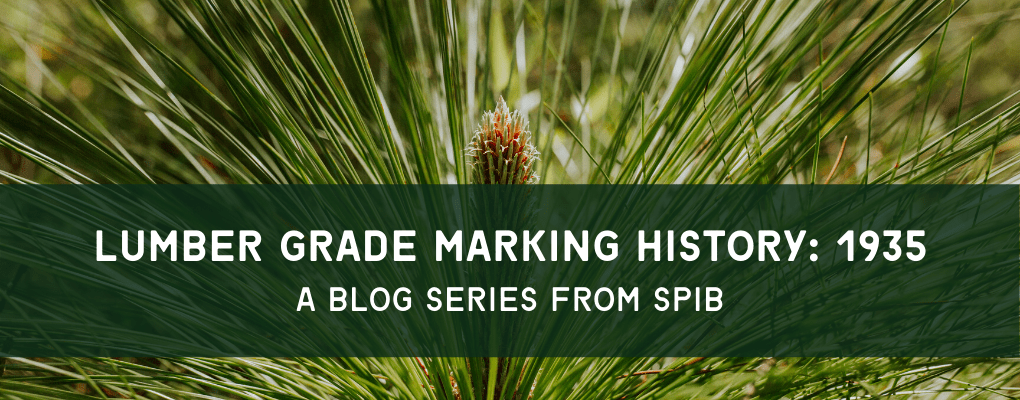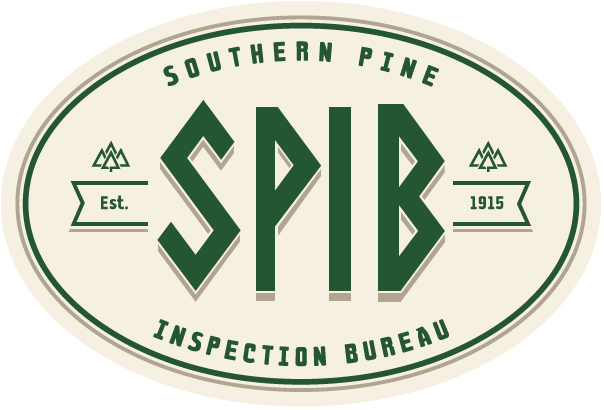
Lumber Grade Marking History: 1935
Introduction
The door to a particularly fascinating era in United States history was officially closed on May 30 when Babe Ruth – then playing for the Boston Braves – took the field for what would be his last career game against the Philadelphia Phillies.
In June, Alcoholics Anonymous was founded in Akron, Ohio by William G. Wilson (affectionately known as Bill W.) and Dr. Robert “Bob” Smith. On June 13, Max Baer was defeated at Madison Square Garden in an incredible bout in New York City, allowing James J. Braddock to become the heavyweight boxing champion of the world. In August, Franklin D. Roosevelt signed the Social Security Act into law – a step that could not have come along at a better possible moment.
1935 also happened to be the year during which the performance of the entire southern pine industry was officially asserted.
Thanks to the fact that there were now greater possibilities looking forward than there were looking into the past, the southern pine industry was alive and well. Timber supplies, trade facilities, and the markets themselves were all performing well – much to the benefit of distributors, specifiers, and consumers everywhere.
Grade standards were preserved, though the imminent dangers of government regulations and control also appeared to be increasing on a daily basis. The southern pine industry took great care to prepare themselves to oppose any and all attempts to transfer the making of rules for standardization, grading, and inspection to a government agency. It was a battle that they were prepared to win at all costs… and it was fascinating, to say the least.
1935
The permanence of the southern pine industry was asserted.
The basis of southern pine sales efforts embraced the principle and practice of lumber grade marking. Within the industry, but not within the Southern Pine Association, a tendency existed to substitute grades whenever an opportunity permitted. The Government, however, was specifying grade marked material or certificates of inspection for all orders. The “Whys and Wherefores of Southern Pine Association Grade Marks and Certificates of Inspection,” and “The Specifications of SPA Grade Marks or Certificates of Inspection,” were written, explained, printed and distributed.
With greater possibilities in the future than in the past, the southern pine industry was alive and progressive. Industry permanence was threefold – timber supplies, trade facilities, and markets – any one useless without the other and all three necessary factors – distributors, specifiers, and consumers, assured of an adequate supply of good lumber, continued to handle and use southern pine. Grade standards were preserved; specifiers and consumers were assisted by grade marking, and the inspections, engineering, promotion, and publicity functions of SPA which had given satisfaction and endured for twenty-one years gave further definite encouragement of permanent existence.
The danger of government regulation and control appeared to be increasing. The southern pine industry prepared themselves to vigorously oppose any attempts to transfer the making of rules for standardization, grading, and inspection of southern pine products, or the control of any other industrial matters, to a government agency. The three steps down to such a condition were:
- A partnership between government and business.
- Government control of the business.
- Government ownership.
The southern pine industry had demonstrated its ability to regulate itself in administering the Code – the Government had failed in its responsibility of Code enforcement.
The prerequisites or basic elements leading to government partnership, control, and ownership were indicated to be:
Legislation – government mandate for maximum hours of labor and minimum wages of pay.
Administration – by the government of the wages and hours, and other labor provisions.
Control – of production by government.
Price – regulation by government of maximum and minimum.
Bureau of Standards – of government to handle grades and inspections.
Grade Marking – government-enforced.
Statistics – government activity.
Supervision – of forest and sawmill practice by the government through USFS.
On the basis of timber characteristics, species produced, freight rate differentials, and markets served, the southern pine producing territory was divided into six sales reports districts. These districts were, to a great extent, competitive regions.
NRA troubles occurred in the early part of the year. The case of violation of the Lumber Code by the Wm. E. Belcher Company, Centerville, Alabama, presented to the Lumber Code Authority Oct. 14, 1938, for testing in the courts as to the constitutionality of the National Recovery Act, was concluded, when the case, not heard by the Supreme Court to which it had been appealed from the lower Alabama Federal Court, was abandoned with the expiration of NRA on June 16, 1935.
